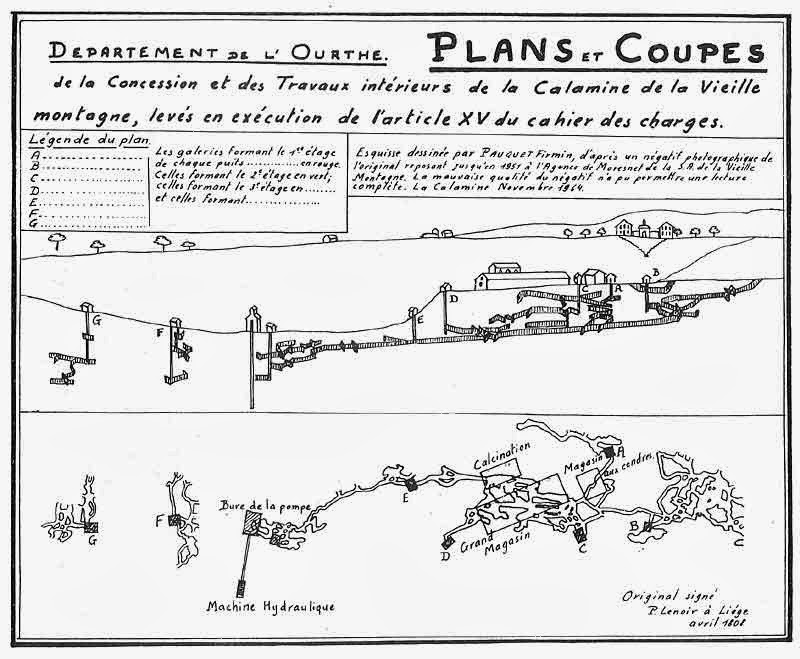So I rambled a bit on mine 'logic' and how a bit of history and geology may be incorporated into a setting or map.
So we enter our mine:
What will we find? As I mentioned, the shafts and tunnels will chase along the jointing and veins of valuable materials. (note the jointing in the photo above - the tunnel follows the joints).
Here's a historical mine map - with both cross-sectional and plan views - a pretty good little dungeon map in its own right...
Part of the attraction and flexibility of this style of mapping or construction is that it affords many options for play - multiple entrances and routes to goals or levels make for a "Jaquayed" dungeon, looping pathways can allow a foe to circle back or flank a party, and objective hazards abound (traps, cave-ins, open or obscured shafts). The party may descend through levels, or skip entire levels via direct routes in and out.
Also, you get a very 3D experience. Note that the lower map can be interpreted/used as either a plan view, or a cross sectional view. If a cross section, suddenly a significant portion of the adventure challenge is rappelling and scaling in and out of shafts and chambers.
And remember those dwarf skills of sensing sloping passages and new construction/digging? Here is where they can really come into play.
Of course, a mine may not be the only subsurface feature - incorporate it as a constructed level beneath a temple, followed by a natural cavern. Mix it up a bit and give the party the sense of moving through multiple environments created by different groups or forces.
Next up, I'll sketch up a small "mine" level using a couple of the concepts that I have discussed...





No comments:
Post a Comment